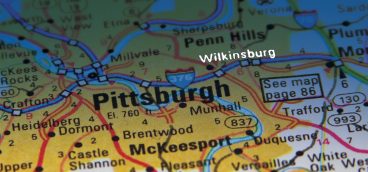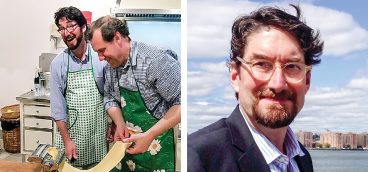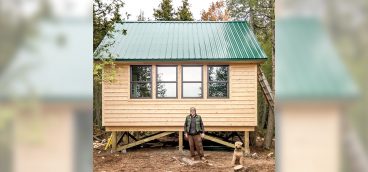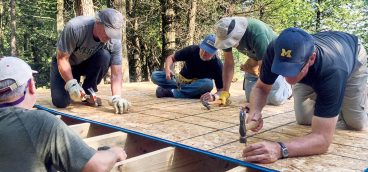Let’s Take “the Pits” out of Pittsburgh
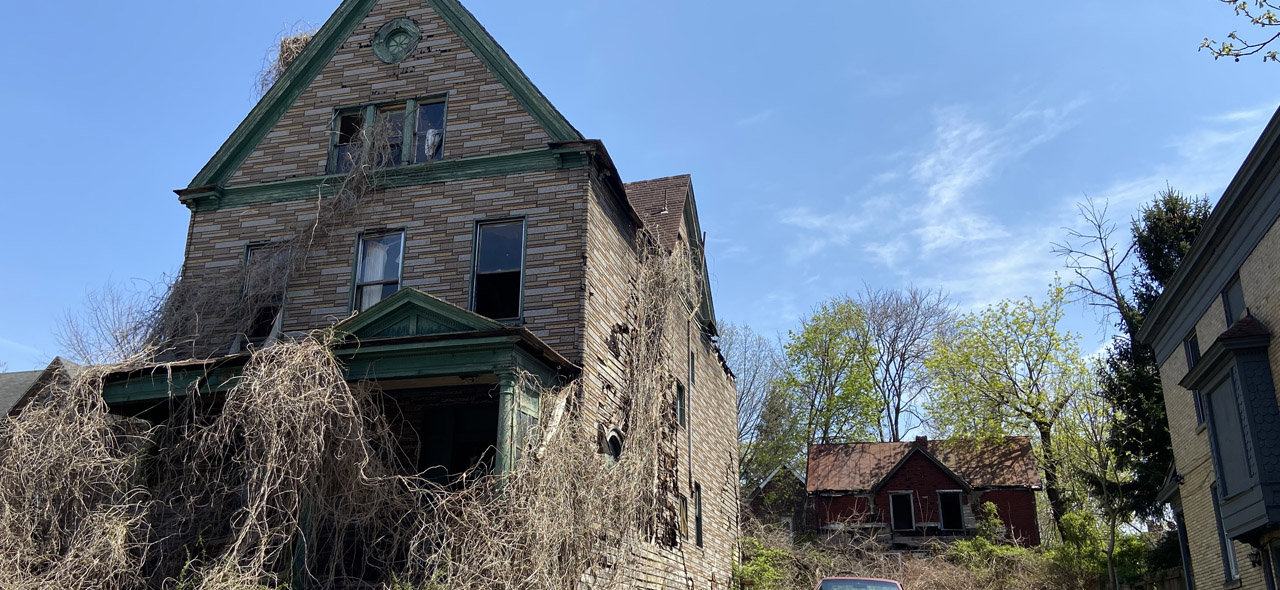
June 13, 2022
In my spring column, I wrote about the borough of Wilkinsburg, encouraging Pittsburgh City Council to vote in favor of annexing the failed municipality. When I wrote it though, it had been years since I’d veered off of Wilkinsburg’s main drag — Penn Avenue — and actually explored the borough. Last month, I drove all over Wilkinsburg (as well as East Hills, North Braddock, Homewood and the Hill District). And even after 37 years as a journalist here and “seeing it all,” what I saw shocked me.
We have written extensively in these pages about vacant and abandoned property in Allegheny County and though I assigned and edited those stories, I didn’t know just how bad the situation in Wilkinsburg (and many other areas) had become — how many homes are simply rotting away, home after home, street after street.
It’s been 10 years since the great political scientist James Q. Wilson died. His famous “Broken Window Theory” held that signs of disorder and decay in a neighborhood — i.e., a broken window — invite further decline, like an infection that, if not remedied, ultimately ravishes its host.
Imagine then, what becomes of a municipality where there are whole streets of homes where not only are there broken windows but no windows at all — where the porches are crumbling and the roofs have collapsed. That’s the reality in Wilkinsburg where a study last year found 1,026 vacant structures and an additional 604 vacant lots.
Imagine what becomes of a county where there are tens of thousands of such properties. That’s the reality in Allegheny County, where there are more than 51,000 vacant housing units, according to Jeff Fraser’s excellent story on page 68. Fifty-one thousand.
Our region — particularly the city of Pittsburgh, which has some 24,000 vacant properties — has been slow in taking advantage of Land Bank legislation created in 2012 to stop the galloping blight. Two years ago, I tried to get our readers’ attention by putting the following headline on another of Jeff’s blight stories: “Cleveland 11,000 — Pittsburgh 1.” That’s how many properties Cleveland’s Land Bank had restored to life versus the number Pittsburgh’s Land Bank had resuscitated.
Increasingly, when I look across the border to Ohio, I see a state where leaders work together with a can-do attitude to find solutions and turn them into reality. You see it in Ohio’s landing Intel’s new $20 billion chipmaking plant. You see it in Cleveland’s success with blight. And you see it in another story in this issue (page 96) about Ohio’s cooperation at the state level to get beyond confidentiality strictures and gauge whether the millions it’s spending on workforce development is actually effective.
Too often, this cooperative can-do attitude seems to be absent in Pennsylvania, especially in Harrisburg. And while Greater Pittsburgh is a great place to live in many ways, we seem not to recognize or be willing to countenance the reality of our economic situation.
Our job growth coming out of the pandemic is the slowest of the top 40 metro areas in the United States. And it’s no secret why. The seven-county region continues to lose population, and it is people who create jobs and economic activity. It’s been that way here for nearly 40 years, and it’s been documented and discussed from “Here to Kingdom Come.”
As I see it, we have three options. One is to pretend there’s no problem and continue treading the same path and think everything’s okay. Another is to say, “Well, it’s so hard to change demographic trends and attract people here, we might as well just enjoy the good parts of life here and continue to manage decline.” If we follow the first two, we can continue to go to our favorite neighborhood restaurants (if there’s enough staff), and hope the Steelers make a comeback and defend our honor. And we can let Ohio be the place that gets the chip factory and reinvigorates its cities. We can let Ohio be the place where young people move because there are jobs.
Or, if we don’t like the sound of that, there is a third option. We can come together and decide that we can do better and that it’s time to take a different tack.
I hasten to point out that our predicament shouldn’t be blamed on weak leadership. Generally, we’ve had very good leaders. Tireless efforts over the past 40 years on a broad front — public, private and nonprofit — have made this a great place to live. But our problems aren’t like those of other regions. We lost nearly 200,000 jobs in the ‘80s. And that meant we lost hundreds of thousands of people — and their future children — to the point that we have more deaths than births. No other big city has faced this. And so we can’t simply do what other cities are doing. As my Dad said to me after I came in last in a sailing race as a young man, “If you find yourself in last place, do something different, even if it’s wrong.”
For decades, when an unusual idea or proposal has been raised here, I’ve heard people say, “Well, has it been tried elsewhere?” We have to finally realize that we won’t succeed if we follow the playbook that every other city is using. Every other city and region is competing to attract people — and many of them have beachfronts and more sunshine. No, we have to rekindle the spirit of boldness and innovation that made Pittsburgh great once upon a time and do things no one else is doing.
***
The 51,000 vacant housing units in Allegheny County are bleeding local governments to the tune of $38 million a year in terms of services and lost income. Yet, we say, “Well, it’s too big a problem and we don’t have the money to tackle it.” Or, as has been the case in the City of Pittsburgh, it simply isn’t a priority at all.
Well, now we do have the money. Allegheny County’s share of the federal American Rescue Plan funds is $380 million, which we have until the end of 2024 to decide how to spend. Imagine if we leveraged a significant portion of those funds by working with our regional philanthropies to create an initiative that brings the best 10,000 of those housing units back to life?
We also know that we need an infusion of people to turn around our economy.
How about using that vacant property as a means of bringing people to Pittsburgh? It’s called Urban Homesteading, and the idea, roughly, is that if you come here, continue to fix up one of these properties and live in it for five or 10 years, it’s yours. If we embraced this on a grand scale, it could be one plank of a platform that could make Pittsburgh a national model of real renaissance, renewal and cooperation.
There will undoubtedly be impediments and obstacles to such a plan. One is that it takes time and money to get clear title. But if this were a regional priority, do you think we might find a way to expedite that process and hire lawyers to do that work? I do.
Again, look at Cleveland. By returning 11,000 properties to the tax rolls, Cleveland has benefited from nearly $1.4 billion in higher property values, sales tax revenue and other benefits. Cleveland did it on a budget of $8 million a year. Think what we could with that much or more.
If you were young and looking to get a leg up in life, would you move to a city with a great quality of life that helped you attain the American Dream of home ownership simply by virtue of some sweat equity and living there?
What if you were a Ukrainian refugee? We already have what is apparently the third-highest concentration of Ukrainians in this country. Why not bring more here? Imagine if we had 10,000 properties ready to welcome these Ukranians. Why not give them a hand and, in the meantime, help our own city grow?
But let’s not stop at international refugees. Let’s target other groups too. It’s not hard to imagine the possibilities (as John Lennon said, “It’s easy if you try”). We have great healthcare, great education, and friendly people. And in terms of livability, we’re continually judged to be the most livable city in what is by far the best country in the world. Who wouldn’t want to live here?
Why not earmark one cluster of vacant and abandoned homes for artists? Create a whole neighborhood for them where they can live and exhibit at prices they can afford. With another cluster, why not create an Eco-Village that becomes a national model for sustainability (social, culture, ecology and economy)?
Much attention — or at least much lip service — is given to improving the lives of African Americans in this country and in this region. If we want to help a large group of African Americans here, why don’t we do something to fight the blight and add new vitality to some of the currently depressing neighborhoods where many African Americans live? How about a massive infusion of capital, hope and optimism that will boost their spirits and property values at the same time?
There are always wars and disasters and refugees from them. And there is always opportunity. But we have to be ready for it. Remember that famous quote, ascribed to Seneca of Rome? “Luck is where preparation meets opportunity.”
Well let’s get lucky by preparing for a different future. Let’s use our imagination and envision the possibilities and then work together to make them happen. What, exactly, are we waiting for? pq


